One of the most common questions any cuber is asked besides their speed is what cube they use. Hardware is an integral part of cubing, especially nowadays with so many brands and options available on the market. This blog will talk about how cubes and their designs have changed over the years to what we see today. It will first explore the various brands present and then the various interesting advancements that have been made for cube design over time.
Cubing Brands and Companies
The Original Rubiks

When Erno Rubik first invented the Rubik’s Cube, he constructed it out of wooden blocks and rubber bands. Each layer was able to move because of the arrangement of pieces in the core and the whole structure was held together by elastic bands. Once the puzzle began to be mass produced, plastic became the go-to material of choice. Still, the friction between pieces and early designs meant that it was fairly hard to turn and pieces popped easily.
First Gen Cubes
These were DIY models sold by Chinese companies in the early 2000s, including those like YJ, which still remains relevant today through MoYu and its other sub-brands. These cubes were named Type A, Type B, and so on. They were fairly successful alongside the original Rubiks cubes until DaYan came along.

DaYan ZhanChi PRO M 3x3 (Magnetic)
DaYan Supremacy
When speedcubing had a resurgence in the 2000s, so did hardware. Instead of the company Rubiks being the primary source of cubes, however, now the focus shifted to Chinese companies. These companies were able to obtain patents for hardware modifications that made cubes more usable and mass produce them at affordable costs easily. These cubes have been termed the Second Gen speedcubes. One company in particular, DaYan, created by Daqing Bao, reached the peak of its popularity at this time.
From the GuHong to the Zhanchi, these puzzles were in every cuber’s hands. Modified versions with lubes and sandpapered pieces were also rated highly. The DaYan Zhanchi was released in June 2011, and immediately rose to popularity after Feliks Zemdegs broke multiple world records including the famous 5.66 second solve using this very cube. It was revolutionary in the sense that it had “anchors”. These were modifications commonly called torpedoes that attempted to prevent popping and the first to improve both forward and reverse corner cutting.
MoYu, QiYi, Yuxin
DaYan cubes reigned supreme for 2-3 years before being overthrown in 2013 by MoYu, a sub-brand of another company called YJ. Mo stands for Magic and Yu stands for Land, giving the name MoYu. The now obsolete Fangshi, the Weilong, and the Aolong caused much commotion in the community, with the Aolong being used by Feliks to break more world records. When his record of 5.33 was invalid because of a corner twist, the company released the Aolong version 2, which fixed the corner twisting issues.
Another brand founded by Du ChaoYu called QiYi also started making its name during the same time as MoYu. MoYu and QiYi are currently considered some of the best cubing hardware brands, not just in 3x3s, but in a variety of puzzles. The QiYi X-Man series and Thunderclap cube were widely used for a few years. Yuxin also became popular during this time, with its budget prices for a consistent level of quality.

QiYi Cubes Bundle
GAN Cubes
GAN cubes are a recent phenomenon. They first rose to popular use when they sponsored Feliks Zemdegs, who genuinely endorsed their products and was appreciative of their company practices. They are known commonly as the company which produces expensive, high-quality puzzles that push the boundaries of current technology. The “Apple” of the cubing community. GAN is part of the “Big Three” companies today, alongside MoYu and QiYi in terms of usage.

Advancements in Cubing Technology
Torpedoes
Torpedoes were pioneered by DaYan, who used “anchors” to lock the pieces in place, making it much harder for them to pop out while not compromising on the ability of the pieces to move. Torpedoes were an instant success, even though they could not completely eliminate the problem, and have been used in every subsequent cube that has been released by any company. This, however, was just the first step of a mountain of advancements that followed.
Magnets
Nowadays, magnetic cubes are the norm, but they were just collector specialties till 2016. TheCubicle, a US-based cubing store, came out with their first magnetic cube in 2016 with small round magnets in the edge and corner pieces. While they certainly did not invent the idea of magnetic cubes, they were the first to popularize it. Chris Tran was the person spearheading this revolution. Looking back, they are definitely one of the most impactful innovations that speedcubing has seen.
Magnetic cubes offer stability depending on the strength of the magnets without compromising on the speed and corner cutting. People could now turn faster without worrying about deformations and exact precision since the magnets did the job. Companies quickly took up the idea and now magnetic cubes are affordable and available everywhere. The latest GAN and MoYu cubes even allow for customizing magnetic strength by making them easily switchable with different sets.

Boron and Polymer Coats
Boron and polymer coats were an innovation that never really took off. Developed again by Chris Tran, he tried coating cubes in select polymers that make it softer and faster. Boron coats also were popular for a while, but they had different results with different plastics and were expensive for the advantage or feeling they conferred. They are currently not in common use except as collector items or for those who prefer how those cubes feel, since they do not provide any massive advantage.
Honeycomb Design
This was an innovation made by the GAN company. They etched honeycomb-like patterns on parts of the corners and edges that had the most open contact. This allowed for better distribution of applied lubes and reduced friction between pieces.

Customizability
Speedcubes on the market are now at the peak of their customizability. Tensioning systems have myriad options with choices for springs, screws, and in case of GAN, GES nuts, along with magnetic strength. MagLev technology is the latest in this line of innovations, where the traditional spring, screw, and washer system is replaced with two magnets of opposite polarity.
There are also lubes that add to this personalization even more. Weighted lubes of tiered viscosities that speed up or slow down cubes, silicone and water based lubes that are meant for specific parts of the cube, and store-specific lubes like Cubelelo Nucleus and Classic.
Conclusion
With so many options, it’s hard to pick out which cube is for you. However, with the level of customizability and quality that is now available, your speed will not be majorly affected by what cube you use unless you are at the very top level or prefer a certain feeling. Budget magnetic cubes will give similar performances to high-end models and the difference is the quality and preferences. From humble beginnings of wooden blogs and rubber bands, speedcubing hardware has come a long way.
About Author

Pranav Prabhu
Pranav Prabhu is the current 3x3 Fewest Moves (Single) National record holder from Chennai. He started cubing when he was 14 and has 5 years of cubing experience. Besides cubing, Pranav enjoys reading books, writing, and playing the piano. He has participated in 36 competitions and won 30 podiums including 8 gold medals and 1 National record.

















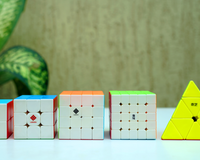
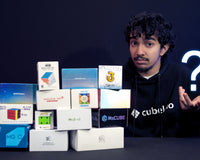
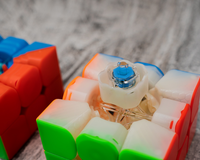
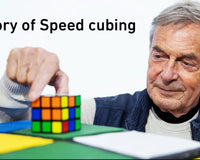
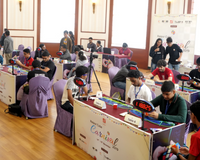











3 comments
Dhruv
Ah, no mention of the ball core back in 2014 speed cubes, or in the Rubik’s speedcube lol
Kaveri Mahale
Ty so much
Eugene Mayhand
Outstanding fantastic thanks for sharing this with me lol G 👍🏿💯